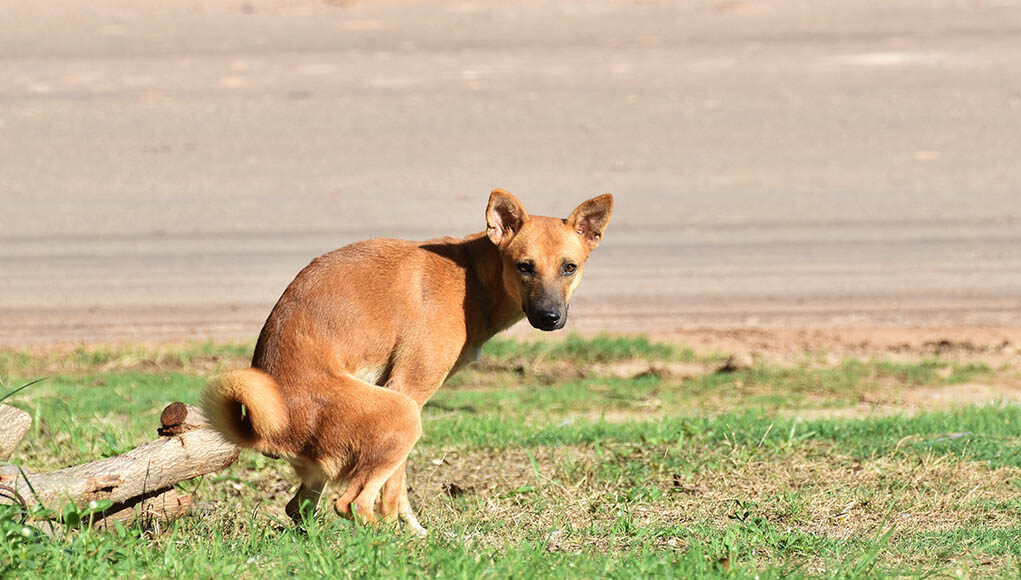Table of Contents
Did you know that you can tell the status of your dog's health through their poop?
If you've noticed that your dog is defecating foamy dog poop, it's best advised to consult with your vet for further examination.
This may be a gross topic for some, but it's a necessary one. This topic is essential for dog owners or future dog owners.
If you're looking to adopt a pup, it's only natural to be curious, and we should all be knowledgeable about our dog's health.
In this blog, we'll tackle the possible causes and treatments for foamy dog poop in dogs.
There are plenty of factors that can affect a dog's poop. And these factors can alter the poop's appearance.
For instance, a dog's poop can turn yellow when a dog has bacterial or viral infections.
Now, if you've noticed that your dog's poop is foamy or bubble, then you better scroll down because we've got a lot to talk about.
But before we tackle the causes and cure for foamy poop in dogs, let's first discuss what healthy dog poop looks like.
Does it differ in color? Shape? Size? Let's find out!
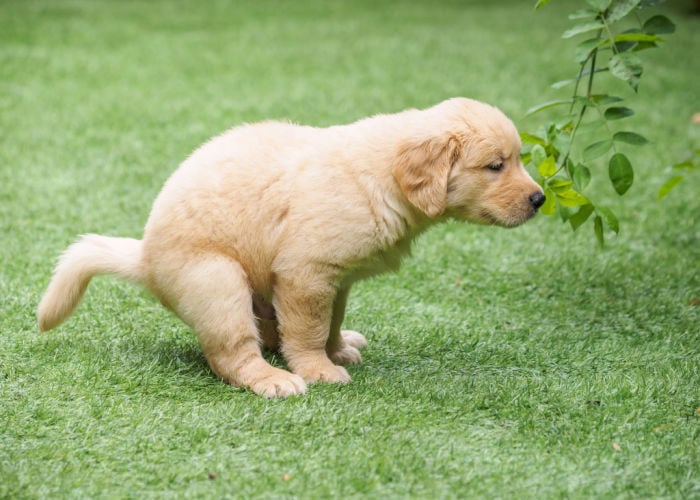
Foamy Dog Poop: What Does Healthy Dog Poop Look Like?
It's easy to determine a healthy dog poop. The perfect dog poop is brown, long in length, and a bit squishy. Remember that the size should be proportionate to the amount of food they ate.
To find out if your pup has a healthy poop, you can track it using these four characteristics below.
Color
As we've discussed above, healthy dog poop is chocolate brown. During the process of digestion, the gallbladder lets out bile to help in the breakdown of food.
There's a pigment in the bile called Bilirubin that affects the color of the poop.
Consistency
The consistency of the dog's poop is connected to its diet. To determine the consistency, vets use a numerical system to score it.
The fecal scoring system gives a value to the stool from 1 to 7. 1 represents very hard pellets and 7 is a puddle.
If you're looking for the perfect stool, that's a 2. This score is a firm stool that looks like a caterpillar and feels like Play-Doh clay when you press or hold it.
Content
To determine healthy fecal, vets also look into the content of the dog poop. The content inside of the stool should look the same as the rest of it.
So if your vet finds any abnormal content such as worms, foreign materials, or fur, it can mean that there's an issue.
Beware of worms such as roundworms or tapeworms. You should also watch out for foreign objects such as grass, sock bits, plastics, rocks, or any non-food items.
Lastly, you can also find fur in their feces. Finding big clumps of fur can mean that your pet is overgrooming itself.
Overgrooming is a sign of stress, allergies, skin disease, or boredom.
Coating
A healthy dog poop should not have any coating over it. If you're collecting a sample off the grass, there should be no trail left behind.
If you see a coating of mucous, it is usually connected to large bowel inflammation and occurs simultaneously with diarrhea.
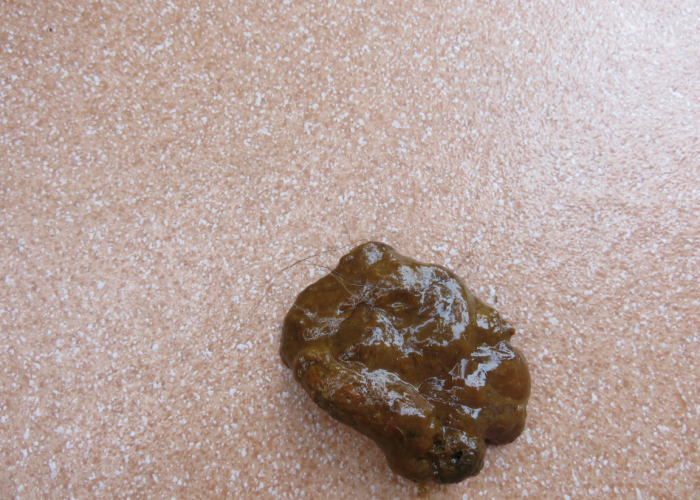
Causes of Foamy Dog Poop
Just like with humans, we can learn a lot from studying dog poop. It might be gross, but it can be very helpful in determining your dog's health status.
Environmental Protection Agency estimated that the typical dog excretes three-quarters of a pound of waste per day or 274 pounds per year. Now that's a lot of poop!
When we see an abnormality in the color and the shape of the dog poop, this could be the first sign that something is not right in their digestive system or food intolerance.
Unfortunately, it can also mean something much more serious such as cancer.
Food Allergy
The most common cause of foamy dog poop is food allergies. This indicates that your dog's digestive tract is not responding well to the food they've taken.
This usually happens when your pup eats foods with soy or dairy products, wheat gluten, beef, and chicken eggs.
When your pup takes any of these products, they can cause the immune system to release antibodies which can lead to diarrhea and throwing up.
Diet Change
An abrupt change in your dog's diet can also cause foamy stools as it can shock their digestive tract.
Their gut will reject the new food at first, which will result in vomiting, excess gas, and diarrhea.
Mucus
Foamy dog stool might just be mucus that's covering the dog's poop. Examine your pup's feces closely. Mucus can look like foam from time to time, and both can be seen in poop.
Mucus in dog stool can be caused by parasites, food allergies, improper diet, gastroenteritis, colitis, cancer, and more.
Bacterial Infections
Unfortunately, infections in the gastrointestinal tract can also cause bubbly or foamy feces in dogs.
When there's an excess fermentation of food by the bacteria, it can increase gases in the guts.
Causes of Brown and Foamy Dog Poop
Even though the healthy dog poop color is brown, it is rare to be foamy.
If you've noticed that your dog's poop is brown and foamy, it can be caused by numerous things, such as increased gas or fat in their digestive system.
Other causes can be:
Food Intolerance
There are certain foods or ingredients that will not respond well to the dog's gut. And when this happens, it can cause diarrhea and foamy stools. ‘
As pet owners, we must know what their food allergies are and take note of these. Be careful about feeding them foods where you don't know the ingredients.
Eating Inappropriate Objects
There are some cases where eating inappropriate items, such as grass, can also cause foamy stools in dogs.
This usually happens with younger dogs. Puppies love to explore and will try to eat anything they find curious about.
These cute little doggies will chew and swallow objects such as pens, bones, leaves, and more.
When this happens, it can cause inflammation or gut wall infection that will result in foamy stools, mucoid stools, or both.
Parasites
Parasites such as Coccidia and Giardia can cause foamy dog poop.
When your pup is infected with parasites, it is usually accompanied by other symptoms such as vomiting, weight loss, scooting, diarrhea, and fatigue.
Parasites are the culprits for slow nutrient absorption, which will lead to high production of gas in the gut.
Malabsorption of Food
Malabsorption is a type of digestive issue in dogs. When this happens, it means that he is not being able to digest his food or he is not absorbing the vitamins and minerals after digestion.
It is typically caused by conditions preventing the small intestine or pancreas from digesting and absorbing fat.
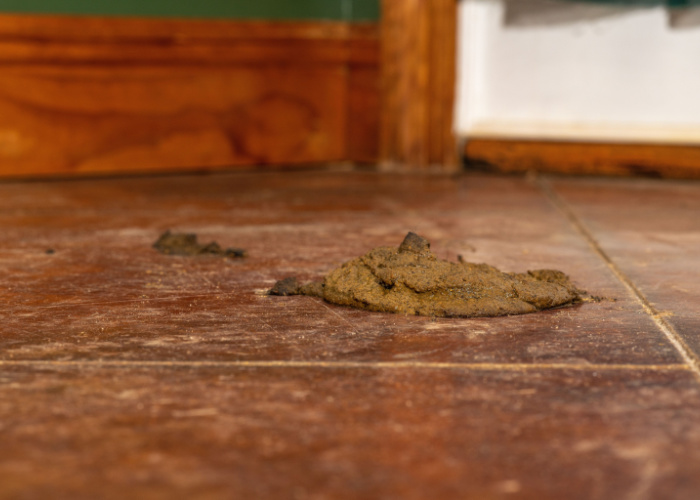
Causes of Yellow and Foamy Dog Poop
If your pup is defecating yellow and foamy dog poop, there are a few possible causes.
For instance, a sudden change in diet, food allergies, bacteria, viruses, fungi, or parasites can also cause yellow feces in dogs.
Undigested Yellow Objects
Examine your dog's poop closely. If you see yellow balls or yellow marks distributed in their poop, it can just be caused by incompletely digested food or inappropriate objects.
A few examples of these foods and objects are corn, yellow crayon, yellow chalk, yellow marker, or any yellow objects that they might have swallowed.
Liver Damage
The liver is an essential part of the digestive system as it is the one responsible for removing waste products and producing bile. Bile is a chemical that breaks down fats.
Liver damage can come from drugs, infections, cancer, and other diseases.
Pancreatitis
Aside from liver damage, pancreatitis is the one you should look out for as this condition can be fatal.
Pancreatitis in dogs is an inflammatory reaction within the pancreas that can cause abdominal pain, vomiting, and lack of appetite.
In pancreatitis, the inflammation causes the digestive enzymes in the pancreas to start to digest the pancreas itself.
If you've noticed your dog is pooping yellow and foamy feces with vomiting, fever, and abdominal pain, it's best advised to consult with your vet immediately. It's better to catch pancreatitis in its early stage.
Gallbladder Problems
Last on the list is gallbladder issues. Examples of these are gallstones, tumors, and more. These problems can cause yellow stool in dogs.
When there's no bile from the gallbladder to the intestines, fat will appear in their poop and making it color yellow or mustard.
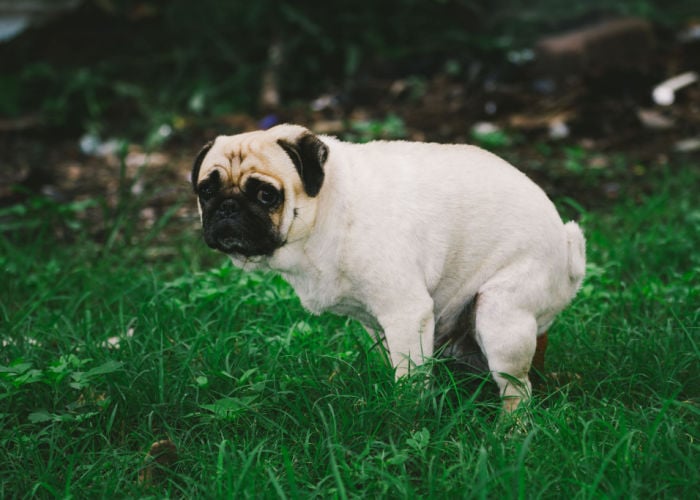
What To Do If My Dog's Poop is Foamy?
Once you've noticed that your dog's poop is foamy or out of the ordinary, you have to examine closely the situation and don't just jump to conclusions.
Changes in their diet and the environment are a big factor when it comes to our pet's health.
Monitor your pet carefully and try to backtrack on the possible things or food that they have eaten lately.
When your healthy dog is experiencing diarrhea, vets recommend withholding food for 12 to 24 hours or just feeding them small quantities of vet-recommended diet for gastrointestinal problems.
But keep in mind that fasting can also cause his blood sugar to drop heavily. That's why when it comes to your dog's health, it's best not to take any risk and consult with your vet rather than guessing what their illness is.
You should also look out for other symptoms such as vomiting, lethargy, lack of appetite, and abdominal pain since it'll help your vet diagnose your dog's condition faster.
If your dog is experiencing a lot of pain, bring him to the emergency room quickly. Your vet will most likely collect a blood and stool sample for them to examine and give the right diagnosis.
Frequently Asked Questions About Foamy Dog Poop
What does unhealthy dog poop look like?
As we've tackled earlier, the perfect dog poop is color chocolate-brown, and it feels like Play-Dog Clay when pressed.
If your dog's poop has shades of the color orange, yellow, green, or gray, this can mean that they are not in their healthiest state or can even be suffering from an underlying disease.
What does a dog's poop look like with parvo?
If your dog is suffering from parvo, he will experience vomiting and diarrhea.
Their vomit can be clear, yellow, or brown, and their diarrhea will most likely contain blood and light yellow or mustard color.
How do I know if my dog has bowel problems?
Dogs that have bowel problems often experience symptoms such as:
- Excessive drooling
- Constipation
- Diarrhea
- Vomiting
- Loss of appetite
- Abdominal Pain
- Bloating
- Dehydration
- Lethargy

Foamy Dog Poop: Summary
Have you seen your dog's poop lately? No? Well, you should check it from time to time.
I know it's a gross topic, and it'll probably stink a lot, but you can learn a lot about your dog's overall health status by examining its feces.
Sudden changes in their diet and environment can affect their poop. For instance, an abrupt change in your dog's diet can shock its digestive tract, and the gut will reject the new food. This can result in vomiting, excess gas, and foamy dog stool.
Foamy dog poop can also be caused by food allergies or food intolerance, bacterial infections, eating non-food items, parasites, malabsorption of food, and mucus.
Unfortunately, it can also be caused by an underlying health issue such as liver damage, pancreatitis, or gallbladder issues.
These health concerns are best caught early so that they'll be easier to cure. It's only natural for us pet owners to be worried when it comes to Fido's well-being.
But keep in mind that it's important not to panic when we see sudden changes in our dog's health because dogs can sense our stress.
If you've noticed something alarming or unusual about them, the best thing you can do is ask your vet about it.
Your vet will be able to correctly diagnose your pup if ever there's a problem.


